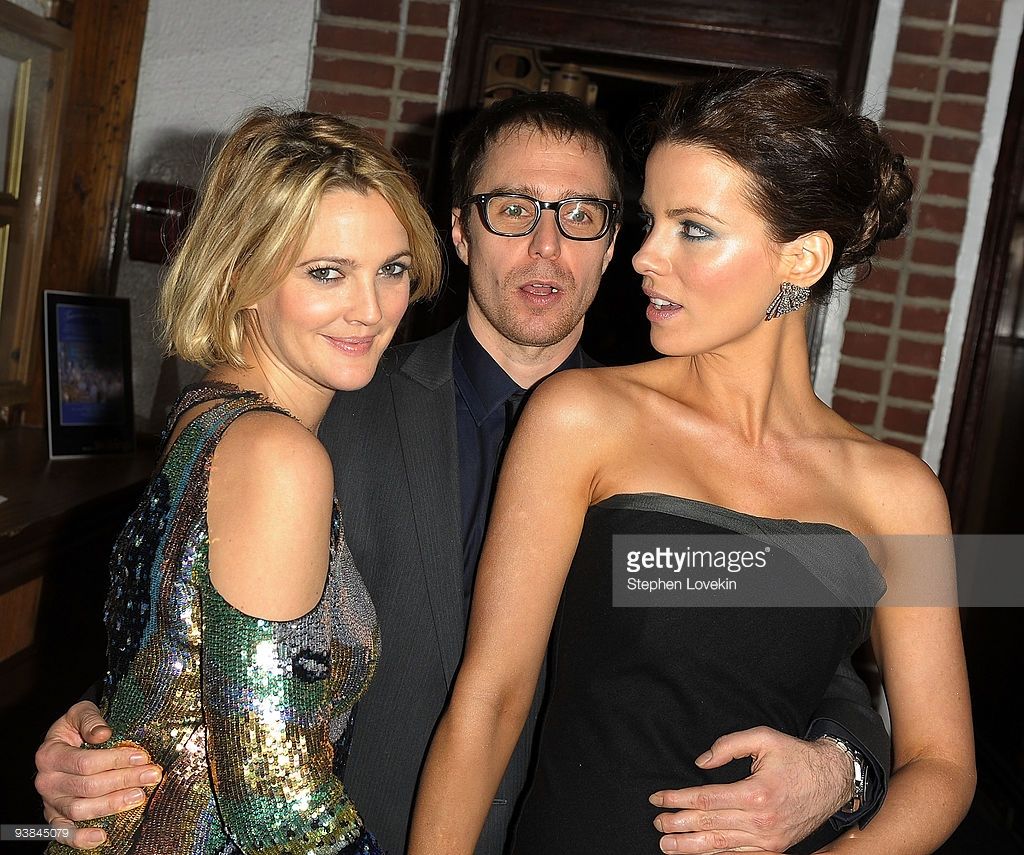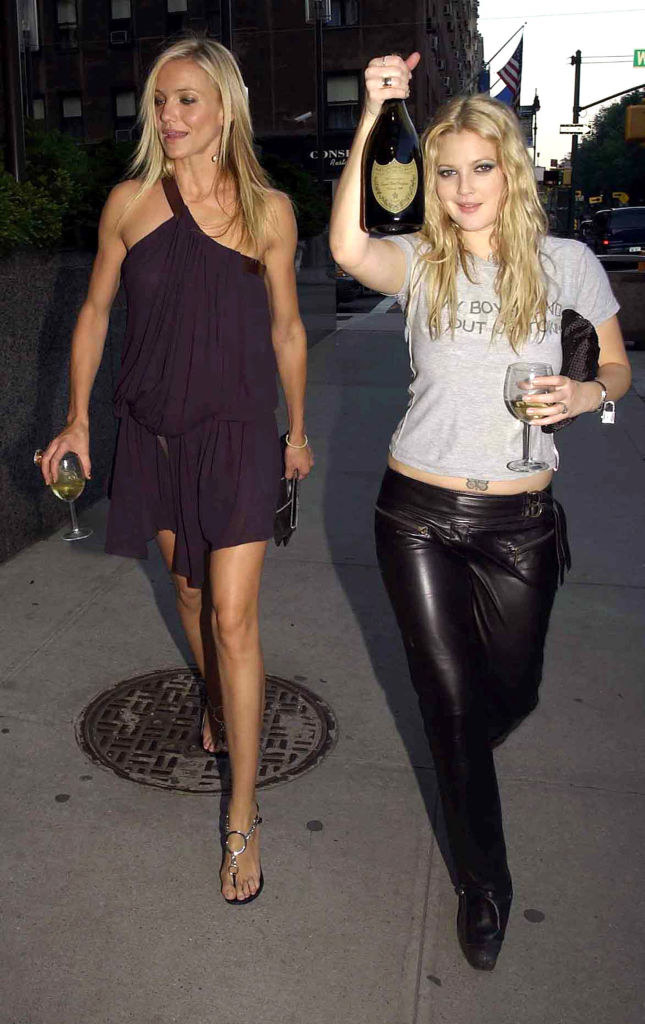In the world of entertainment and celebrity culture, few names carry the weight and intrigue as that of Drew Barrymore. Her career spans decades, marked by transformative roles and a multifaceted persona that has captivated audiences worldwide. However, amidst her impressive body of work and personal brand, a particular aspect of her image has become a subject of fascination and controversy: the perception of Drew Barrymore being naked or nude in the public eye.
This article delves into the complex layers of this topic, exploring the origins, contexts, and implications of Drew Barrymore's image being associated with nudity. From the evolution of her career to the impact of media representation, we aim to provide a comprehensive analysis that sheds light on this sensitive and intriguing aspect of her public persona.
The Evolution of Drew Barrymore’s Image

To understand the perception of Drew Barrymore being naked or nude, one must first trace the trajectory of her career and the evolution of her public image. Barrymore’s journey in the entertainment industry began at an early age, with her first film role at just eleven months old. Her childhood stardom was marked by a mix of critical acclaim and personal challenges, which often placed her in the spotlight for reasons beyond her control.
As she transitioned into adolescence and young adulthood, Barrymore's image underwent a transformation. She became a symbol of youthful rebellion and uninhibited self-expression, which often blurred the lines between her on-screen personas and her real-life persona. This period of her career saw her take on riskier roles and embrace a more daring image, which inevitably attracted both praise and scrutiny.
During this time, the media's portrayal of Barrymore often emphasized her bold choices and the public's perception of her as a free-spirited and unapologetic individual. This narrative, coupled with her high-profile relationships and public appearances, contributed to a perception of her as someone who might challenge societal norms, including those related to nudity and sexual expression.
The Impact of Media Representation
The media’s role in shaping public perception cannot be overstated, and this is particularly evident in the case of Drew Barrymore. The constant scrutiny and portrayal of her image have had a significant impact on how the public perceives her, including the association of her name with nudity or sexualized imagery.
Sensationalist headlines, paparazzi shots, and tabloid stories have often contributed to a distorted view of Barrymore's personal life and professional choices. These media representations can create a narrative that is far removed from reality, leading to misconceptions and stereotypes that are difficult to shake off.
In the context of nudity, the media's focus on Barrymore's image has at times been reductive, reducing her complex persona to a series of provocative images or sensationalized stories. This reductionist approach can perpetuate a false narrative, influencing public opinion and creating a perception of Barrymore as someone who is frequently or exclusively associated with nudity.
Contextualizing Nudity in Entertainment
To understand the perception of Drew Barrymore being naked or nude, it is essential to consider the role of nudity in the entertainment industry as a whole. Nudity in films, television shows, and other artistic mediums has long been a subject of debate, with varying levels of acceptance and controversy.
While some argue that nudity can be a powerful tool for storytelling, adding depth and authenticity to characters and narratives, others view it as exploitative or unnecessary. This debate often revolves around issues of consent, artistic expression, and the objectification of actors and actresses.
In the case of Drew Barrymore, her involvement in projects that feature nudity or sexually explicit content has been a subject of discussion. While some of these roles have been pivotal in her career, pushing boundaries and challenging societal norms, others have led to debates about the necessity and context of such depictions.
| Film | Release Year | Nudity Type |
|---|---|---|
| Poison Ivy | 1992 | Full frontal nudity |
| Ever After | 1998 | Partial nudity |
| Riding in Cars with Boys | 2001 | Implied nudity |

The Complexities of Public Perception

The perception of Drew Barrymore being naked or nude is a multifaceted issue that extends beyond her professional choices and media representation. It is influenced by a range of factors, including societal norms, cultural biases, and individual interpretations.
Societal Norms and Cultural Biases
The way society perceives and responds to nudity is deeply rooted in cultural norms and values. In many Western cultures, there is a prevailing sense of discomfort or taboo surrounding nudity, particularly when it comes to women’s bodies. This cultural bias often extends to public figures, with celebrities like Drew Barrymore becoming subjects of scrutiny and judgment when their images are associated with nudity.
Furthermore, the double standard that exists in society often treats male and female nudity differently. While male nudity may be more readily accepted or even celebrated, female nudity is often sexualized and objectified, leading to a perception of women as sexual objects rather than complex individuals.
Individual Interpretations and Personal Biases
The perception of Drew Barrymore being naked or nude is also influenced by individual interpretations and personal biases. Each person brings their own set of experiences, beliefs, and values to their interpretation of media and public figures. These factors can shape how they perceive and respond to images or narratives associated with nudity.
For some, the association of Drew Barrymore with nudity may be seen as a sign of her boldness, sexual liberation, or artistic expression. For others, it may trigger discomfort, judgment, or even moral indignation, reflecting their personal beliefs and societal conditioning.
The Impact of Taboo and Sensationalism
The concept of nudity often carries a sense of taboo or scandal, which can be exploited by media outlets and public discourse. In the case of Drew Barrymore, the association of her name with nudity has at times been sensationalized, creating a narrative that feeds into the public’s fascination with scandal and controversy.
This sensationalist approach can perpetuate a distorted view of Barrymore's image, reducing her complex persona to a series of provocative moments or controversial choices. It can also contribute to a culture of objectification and exploitation, where the focus is on her physical appearance or sexualized image rather than her artistic talent and contributions to the industry.
The Power of Perception and Personal Agency
Despite the complexities and challenges posed by public perception, Drew Barrymore has demonstrated a powerful sense of personal agency and control over her image. Throughout her career, she has actively shaped her public persona, challenging stereotypes and reclaiming her narrative.
Empowerment and Self-Expression
Drew Barrymore’s approach to her image and career has often been characterized by a sense of empowerment and self-expression. She has made bold choices, pushed boundaries, and embraced her individuality, refusing to be confined by societal expectations or conventional norms.
Her willingness to challenge the status quo and express herself authentically has been a driving force in her career and personal life. This approach has allowed her to transcend the constraints of her early stardom and establish herself as a respected actress, producer, and businesswoman.
Navigating the Media Landscape
In an industry where media representation can make or break careers, Drew Barrymore has demonstrated a savvy understanding of the media landscape. She has learned to navigate the complex relationship between her image and the media, leveraging her platform to promote causes she believes in and control the narrative surrounding her public persona.
Through strategic media appearances, thoughtful interviews, and a well-managed social media presence, Barrymore has been able to shape the public's perception of her, emphasizing her talents, achievements, and personal growth. This proactive approach has allowed her to counter misleading narratives and reclaim her image from the grasp of sensationalism and exploitation.
Embracing Evolution and Growth
One of the most notable aspects of Drew Barrymore’s career is her ability to evolve and grow as an individual and artist. She has embraced change, both professionally and personally, and has not shied away from taking risks or exploring new avenues.
This willingness to evolve has allowed her to challenge the perception of her as a static image or a product of her past choices. By embracing new roles, pursuing diverse projects, and engaging in self-reflection and growth, Barrymore has demonstrated that her image is dynamic and multifaceted, defying simplistic labels or stereotypes.
Conclusion: Embracing Complexity and Authenticity
The perception of Drew Barrymore being naked or nude is a complex and multifaceted issue that reflects the intersection of media representation, societal norms, and individual interpretations. While this association has undoubtedly shaped her public image, it is but one aspect of a rich and diverse career and persona.
By embracing complexity and authenticity, Drew Barrymore has been able to navigate the challenges posed by public perception and media representation. She has demonstrated a powerful sense of personal agency, actively shaping her narrative and challenging stereotypes. Her journey serves as a reminder that public figures are more than the sum of their parts, and that their images are dynamic, evolving entities that deserve to be understood in their entirety.
As we conclude this exploration of Drew Barrymore's image and the perception of her being naked or nude, we are left with a deeper understanding of the complexities that underlie public perception. It is a reminder that we, as an audience, have a responsibility to engage with these issues thoughtfully and to resist the allure of sensationalism and simplification. By doing so, we can appreciate the richness and diversity of individuals like Drew Barrymore and the stories they have to tell.
How has Drew Barrymore’s image evolved over her career?
+
Drew Barrymore’s image has evolved from her early days as a child star to a symbol of youthful rebellion and uninhibited self-expression. She has embraced a more daring image, taking on riskier roles and challenging societal norms. This evolution has been marked by a transformation from her early years of innocence to a more complex and multifaceted persona.
What impact has the media had on Drew Barrymore’s public perception regarding nudity?
+
The media has played a significant role in shaping public perception of Drew Barrymore’s association with nudity. Sensationalist headlines, paparazzi shots, and tabloid stories have often contributed to a distorted view of her personal life and professional choices. These media representations can create a narrative that is far removed from reality, influencing public opinion.
How does societal norms and cultural biases influence the perception of Drew Barrymore’s nudity in entertainment?
+
Societal norms and cultural biases often shape how we perceive and respond to nudity in entertainment. In many Western cultures, there is a prevailing sense of discomfort or taboo surrounding nudity, particularly when it comes to women’s bodies. This cultural bias can extend to public figures like Drew Barrymore, influencing how her image is received and interpreted.